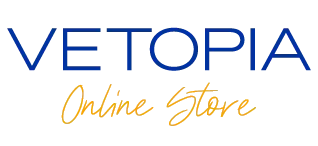Training and Socialisation.
With a little persistence, dogs generally respond very well to training. The best method of training is positive reward, where your dog is rewarded for the correct behaviour with food or praise. Negative reward training (telling a dog off or smacking a dog) has long been considered outdated and cruel, and generally results in a poorly trained dog who is scared of their owner. Training rewards must always be given at the time of the action – if you reward a dog five minutes later he may have forgotten exactly what it was he did right.
Toilet training is generally the most important thing for a young pup to learn. First decide on where you would like your dog to go to the toilet. Common choices include on paper or 'puppy pad' in the bathroom, on the balcony or roof, or on walks. Dogs will rarely go to the toilet in their cage – this is similar to asking a person to go to the toilet in their bedroom. Carefully watch your dog, and when he or she starts to sniff or look like they are getting ready to go to the toilet, gently and calmly put him or her in the toilet area. If there is an accident or your dog has gone to the toilet in the wrong place, do not scold or hit. The best action is to pretend nothing has happened, put your dog in another room and clean up the area. Spraying the area with an odour-neutralising spray such as Urine-Off will help remove any traces of the smell which the dog may pick up on in future. You should not let the dog see you cleaning up, which may be interpreted as attention, and hence a ‘positive reward’, encouraging toileting in the area in future.
There is significantly more information available about training on our website page House Training Your Dog.
House training.
House training your puppy requires lots of patience. Never punish a puppy for going to potty in a place you really didn’t want them to go. Doing so can mean your dog will be afraid to do his business in front of you. This is not nice for him and also means he will hide in places that are hard for you to reach and clean up! It’s also good for you to be able to see your dog’s stools so you can check for worms and other issues like diarrhoea. Instead, make sure you take your puppy to where you’d like him to go regularly. It can take a long time for some dogs to learn this so be prepared with your cleaning products, best smile and patience for up to six months!
Instead of punishment, use praise. As soon as he goes when and where you want, give him a treat or lots of verbal and physical affection to let him know he did a great job. You can even train him to ‘go on command if you start to introduce a verbal command like ‘go potty’ as he is doing his business. For young pups, they will need to go in the night so it’s a good idea to get up and let him go once in the night as well as giving lots of opportunities throughout the day. It’s also a good routine to take him to the bathroom about 20-30 minutes after mealtimes. While a younger puppy might need to go every few hours, an adult may be able to hold it for around six hours. Don’t leave your dog holding on for too long once he is trained as he can get urinary problems and kidney problems if he not able to go when he needs to.
Teach obedience.
Ensuring you can stop your dog from doing something that could endanger himself or others is crucial but training can also be fun for you and your dog. It takes time and patience to teach obedience, just like bathroom training, but commands like ‘stop’, ‘stay’, ‘sit’ and good leash training will make both your life and his much easier in the long run.
Use positive reinforcement in the form of a favourite treat, verbal praise and physical affection to tell your dog when he has done something right. Be consistent with your commands and take training one step at a time. You’ll be surprised how quickly some dogs will learn to sit when food is involved! If you are struggling with any part of obedience training, consider working with a dog trainer. They will help to teach you how to teach your dog. Make sure you go to a reputable trainer who will use kind and ethical methods. You can find a list of trusted resources for Hong Kong dog trainers here.
Socialize your puppy.
Dogs, like humans, are social animals. They like to interact, play and get to know other dogs and people. However, without being given the right opportunities to socialize, they can develop behavioural issues. It’s best to get your puppy interacting with other dogs and people from a young age so that they know how to greet and socialize in an appropriate manner early on. Again, just like people, some dogs are naturally more shy or more gregarious than others so get to know what your dog needs for a healthy social life.


























